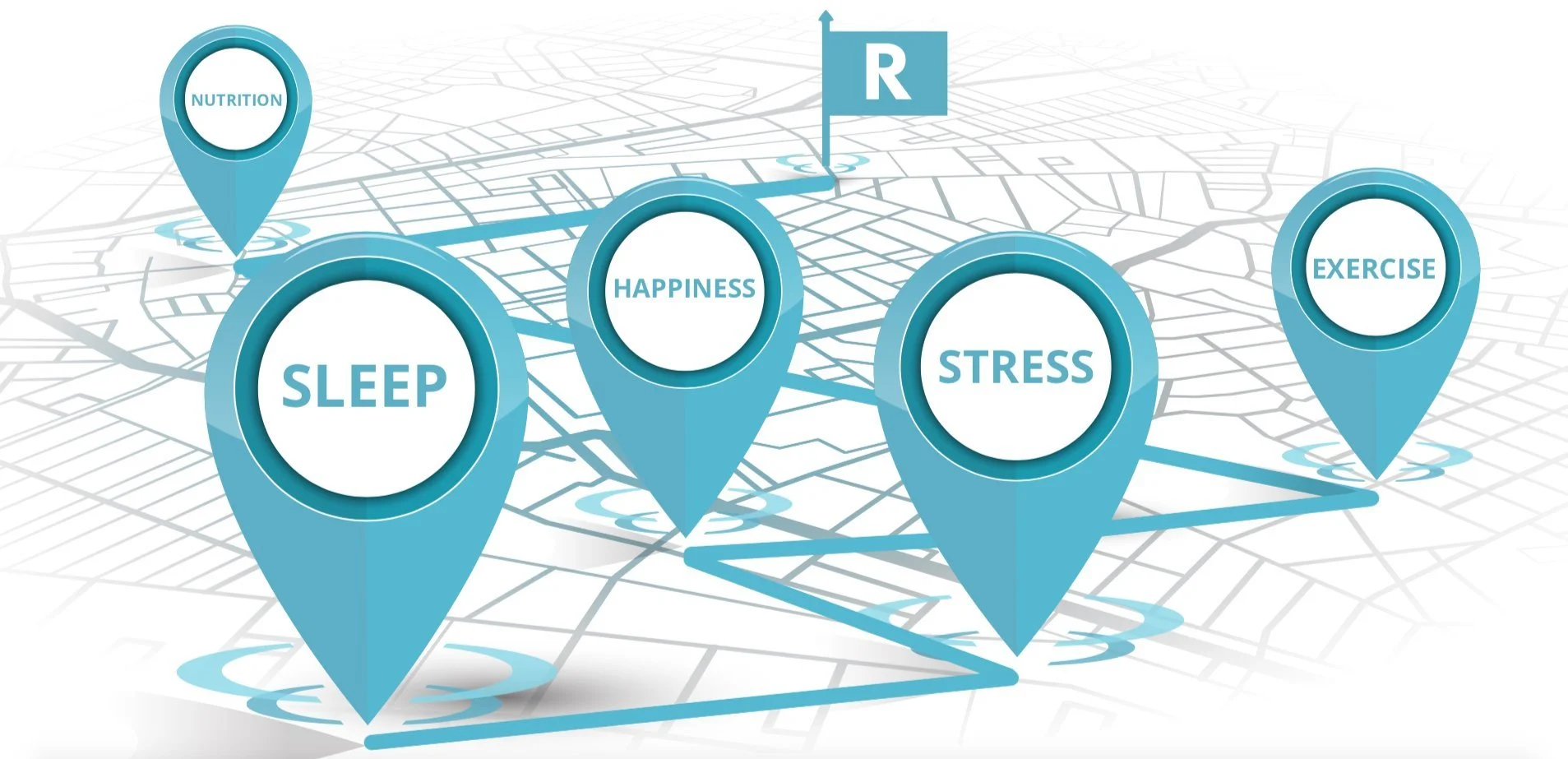The annual costs of unhealthy lifestyles in Australia
Australian healthcare spending reached 10% of GDP in 2019, up from 7.6% in 2000 [1]. Of this, it is estimated that approximately 36% is attributable to modifiable risk factors, most of them lifestyle-related [2]. 47% of Australians now have at least one chronic condition and 20% have 2 or more [3a]. 5% of adults have type 2 diabetes and 5% have heart disease. 16% of the population suffers with back pain [3b]. Lifestyle factors – inadequate sleep, high levels of stress, unhappiness, physical inactivity and poor nutrition – lead to these and many other preventable chronic conditions.
Poor lifestyles are also costing companies enormous amounts of money
Unhealthy and unhappy workers are costing Australian companies approximately A$8700 per employee each year. These costs are often hidden and therefore overlooked. They do not appear as a single line item on a company's income statement. If they did, CEOs and CFOs would address the issue immediately.
The table below contains a breakdown of the underlying drivers of these costs and the magnitude of the problem presented by each individual component:
Poor sleep [4a] [4b], high levels of stress [5a] [5b], unhappiness [6], physical inactivity [7], poor nutrition [8a] [8b] , smoking [9a] [9b] and back pain [10a] [10b] add up to more than A$113 billion annually. These numbers are all adjusted for inflation.
The numbers above illustrate the staggering costs created by unhealthy lifestyles. Poor lifestyles are an enormous and unsustainable burden on our health care system. Corporations have to deal with absenteeism, presenteeism [11], job turnover and retention. Poor sleep, high levels of stress, unhappiness, physical inactivity and poor nutrition are the main culprits. The good news is that a healthy lifestyle prevents 80% of chronic disease [12].
RENDLE helps solve this problem
We have created a data-driven and structured system to drive lifestyle improvements. We help employees understand what the minimum guidelines for healthy living are. We provide personalized education and a healthy lifestyle checklist that allows employees to see what they do well and where they can do better.
For organizations, we provide them with population KPIs and metrics, so they can see how and why their population is improving. For example, our data highlights the number of employees that meet the minimum guidelines for exercise and nutrition. We will also show the percentage of your population that is suffering from back pain or poor sleep or both. These and the many other data points we generate are essential for driving improvements within your organization.
In summary, using a structured and data driven approach to drive employee health and happiness is key to making your company a better place to work. Our process optimizes all your existing health and wellbeing efforts and allows you to identify what the current needs are within your population. We then set goals and provide actionable steps on how to best drive improvements. As a result, you will improve every part of your business along the way, from market reputation and financial performance, to innovation and creativity.
We wish you true wealth.
Sources and references:
[1] Health expenditure Australia 2018-19 – Australian institute for health and welfare, Australian Government, November 2020
[2] The economic cost of preventable disease in Australia: a systematic review of estimates and methods - Australian and New Zealand Journal of Public Health, August 2019
[3a] Chronic conditions and multimorbidity – Australian institute for health and welfare, Australian Government, September 2020
[3b] Chronic conditions - Australian Bureau of Statistics, December 2018
[4a] Why Sleep Matters: Quantifying the Economic Costs of Insufficient Sleep - RAND Corporation, April 2016
[4b] Asleep on the job: Costs of inadequate sleep in Australia - Sleep Health Foundation, July 2017
[5a] 85% of Australian workers experience stress resulting in over 20 million sick days per year - Medibank, October 2013
[5b] The Cost of Workplace Stress in Australia - Medibank, August 2008
[6] State of Workplace Mental Health in Australia - Melbourne: Beyond Blue, 2014
[7] The cost of physical inactivity - Medibank, October 2008
[8a] Weighing the cost of obesity: A case for action – PwC, October 2015
[8b] The societal costs of alcohol misuse in Australia – Australian Institute of Criminology, April 2013
[9a] Tobacco smoking– Australian institute for health and welfare, Australian Government, July 2020
[9b] Identifying the Social Costs of Tobacco Use to Australia in 2015/16– National Drug Research Institute, Curtin University, May 2019
[10a] The cost of pain in Australia – A painful reality – Deloitte, April 2019
[10b] Musculoskeletal conditions and comorbidity in Australia – Australian institute for health and welfare, Australian Government – February 2019
[11] Presenteeism Costs Business 10 Times More than Absenteeism - EHS Today, March 2016
[12] 5 Healthy Habits That Prevent Chronic Disease - Health Essentials from Cleveland Clinic, September 2020
About RENDLE:
RENDLE helps organizations drive lifestyle improvements in a structured, data-driven manner. Our methodology guarantees populations will improve their sleep, stress management, happiness, exercise and nutrition while reducing back pain, smoking and other costly conditions. For more details about how we can help your organization improve contact us.


